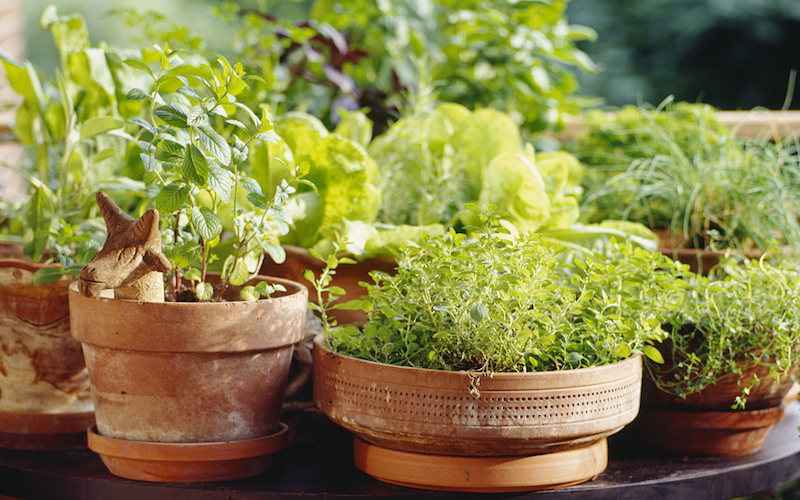Do you dream of having your own herb garden? Or perhaps your idea of culinary heaven is a big planter full of your favourite herbs by the kitchen door. Many herb seeds can be sown indoors or outside, and offer a cost-effective way to add flavour to your food. Here’s everything you need to know about sowing and growing your favourite herbs.
Contents:
- Basil
- Borage
- Chives
- Coriander
- Dill
- Florence fennel
- Lavender
- Lemon grass
- Lovage
- Marjoram
- Mint
- Oregano
- Parsley
- Purslane
- Rocket
- Rosemary
- Sage
- Sorrel
- Tarragon
- Thyme
How to grow basil
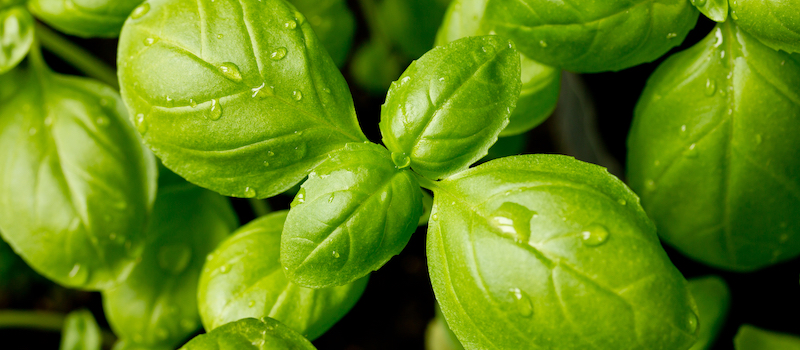
Image: Basil ‘Genovese’ herb seeds from Suttons
Basil prefers a sunny position but with some relief from the scorching midday sun. Sow during March in a heated greenhouse or on a window sill. If you want to direct sow outdoors, wait until May or June. Take care not to over-water the seedlings as they’re prone to damping off – succumbing to fungal infections.
Harvesting: Pick young leaves regularly.
Preserving: Freeze the leaves, painting both surfaces with olive oil to retain the flavour. The leaves can also be dried and stored whole, in an air-tight container.
Culinary Uses: Sprinkle over salads, sliced tomatoes, rice salads, courgettes, marrows, beans and use liberally in Mediterranean dishes.
How to grow borage
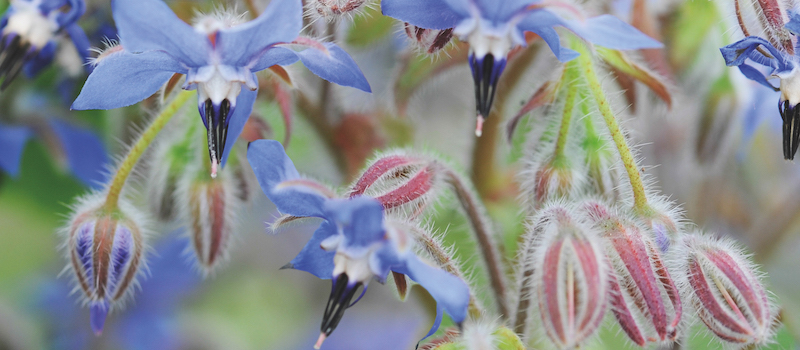
Image: ©Thompson & Morgan
Borage is an easily grown annual that has beautiful electric blue flowers and is a strong favourite with bees. Sow borage seeds from April onwards for crops about eight weeks later. It prefers to grow in a light, well-drained soil in a sunny position.
Harvesting: Both the flowers and leaves can be harvested as required.
Preserving: The flowers can be dried and the leaves can be frozen in ice cubes.
Culinary Uses: The flowers can be used as a garnish or spread on salads. Chop the leaves finely into salads, yoghurt, soft cheese and pickles. Cook as spinach.
How to grow chives
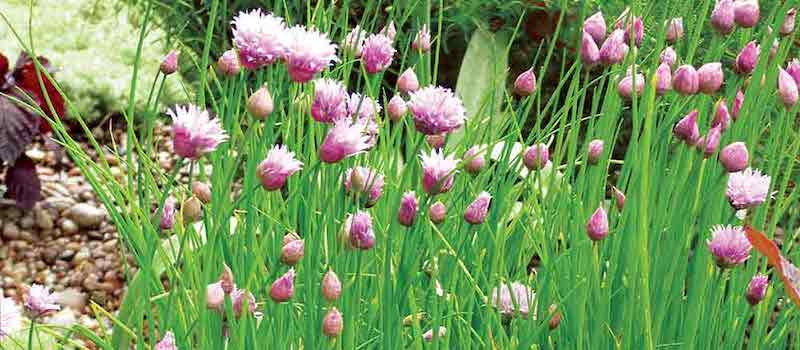
Image: Chives herb seeds from Suttons
A perennial herb, chives require a moist well-drained soil in a sunny position or partial shade.
Sow the seeds outdoors from March to May, or at any time if you’re growing them on the kitchen windowsill.
Harvesting: Cut the leaves back to 2.5cm (1in.) above soil level to allow for regrowth. Divide and replant clumps every 3-4 years.
Preserving: Place the leaves in a polythene bag where they will stay fresh for about a week if refrigerated. Chives can also be frozen.
Culinary Uses: Sprinkle the leaves on salads, sandwiches, soups, cheese and egg dishes.
How to grow coriander
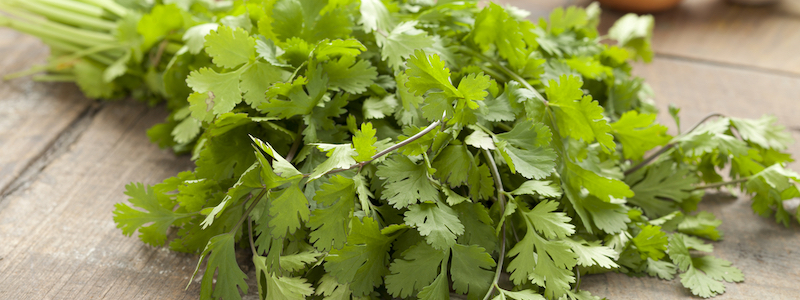
Image: Coriander herb seeds from Suttons
Grow coriander in full sun in well-drained soil. Simply direct sow the seeds outside in late March through to the end of June. For fresh leaves all summer long, coriander ‘Confetti’ has distinctive carrot-like leaves, a lovely flavour, and matures quickly making it ideal to use as a cut-and-come-again crop. However, if you also grow fennel, keep these herbs well separated or it will reduce the number of seeds your fennel produces.
Harvesting: Pick the young leaves at any time for immediate use.
Preserving: The leaves can be frozen. You can also collect the seed when it turns brown just before it drops, dry it, and store whole in air-tight containers.
Culinary Uses: Add coriander seeds to tomato chutney, pickles, ratatouille, curries, soups, sauces, vegetable dishes, apple pies, cakes and biscuits. Fresh lower leaves taste delicious in curries, salads, stews and also work well as a garnish. An extremely versatile herb, coriander leaves are suitable for use in potpourri and the stems can be cooked in soups and with beans.
How to grow dill
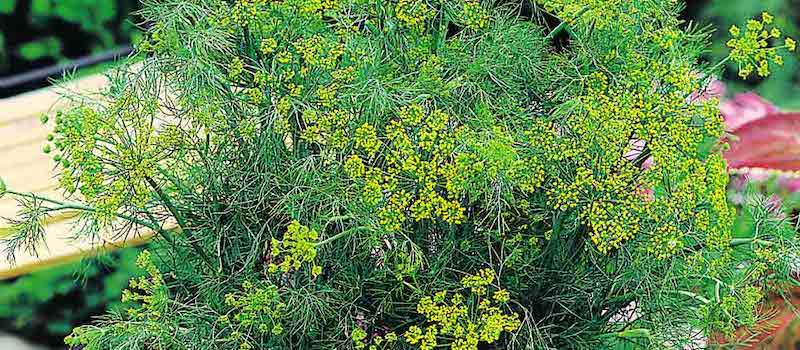
Image copyright: Floramedia
Dill should be grown in full sun in a sheltered position. Sow your dill seeds outdoors in spring, but keep them well away from fennel as the two herbs cross pollinate, impairing the flavour of both.
Harvesting: Pick the young leaves anytime. Collect dill seeds once the seed head turns brown – the best way to do this is to hang the plant upside down over a cloth.
Preserving: The leaves can be frozen or dried and stored in an air-tight container.
Culinary Uses: Use the ground or whole seed in soups, fish dishes, pickles, apple pies, cakes and bread. Add finely chopped leaves to soups, potato salad, cream cheese, eggs, salmon and grilled meats. Dill also makes a lovely garnish.
How to grow Florence fennel

Image: Shutterstock
Sow Florence fennel seeds into well-drained soil in a sunny spot from May to July. Then carefully thin the seedlings to 20cm (8ins.) apart, taking care not to disturb the roots of the plants that remain. Avoid growing it near dill or coriander.
Harvesting: Harvest the swollen bulb-like stems from mid August through to October.
Culinary Uses: Florence Fennel has a celery-like taste with a hint of aniseed and can be sliced or grated for using raw in sandwiches and salads. Alternatively, roast, braise, steam or boil it.
How to grow lavender
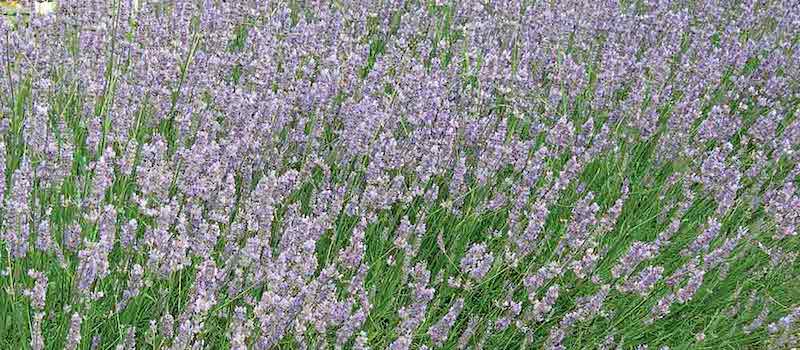
Image: Lavender Seeds ‘Hidcote Blue’ from Suttons
Sow lavender seeds under glass during February and March for flowers from August to September, or outdoors during April through to June for flowers the following year. If growing under glass, transplant the seedlings into small pots once they’re large enough to handle and when they’ve grown sufficiently, plant outdoors in a sunny position where the soil drains freely.
Harvesting: Pick the flower stems in the morning just as they start to open. Leaves can be picked at any time.
Preserving: Dry flowering stems in trays or by hanging in small bunches.
Culinary Uses: Use the flowers to flavour jams. You can also add small amounts of lavender flowers to soups and stews. The leaves have a bitter flavour and are best used in potpourri.
How to grow lemon grass
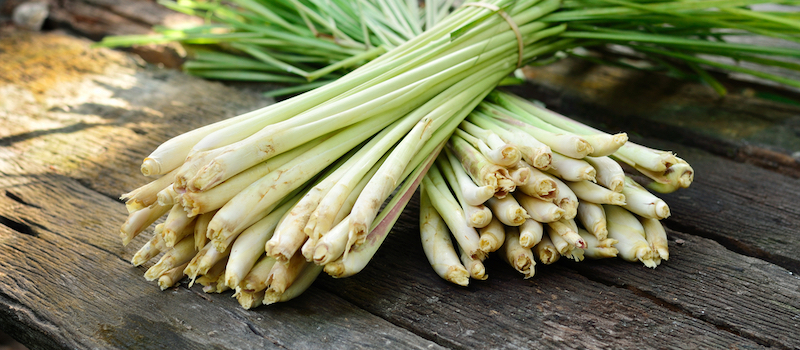
Image: Lemon Grass herb seeds from Suttons
Lemon Grass is a tender perennial that can reach a height of 1.8m (6ft.). Sow the seeds in a propagator or on a sunny windowsill during February and March at a temperature of 18-20ºC (65-68ºF). The plants can be stood outdoors during the summer months and should be overwintered in a heated greenhouse or conservatory at a temperature of 13ºC (55ºF).
Harvesting: Cut the young growth as required. Avoid cutting too heavily in the winter – it’s best to allow the plants to recover and cut in spring to encourage new growth.
Culinary Uses: Chop tender shoots into salads and stir fries or use as an ingredient in Thai and Vietnamese cooking.
How to grow lovage
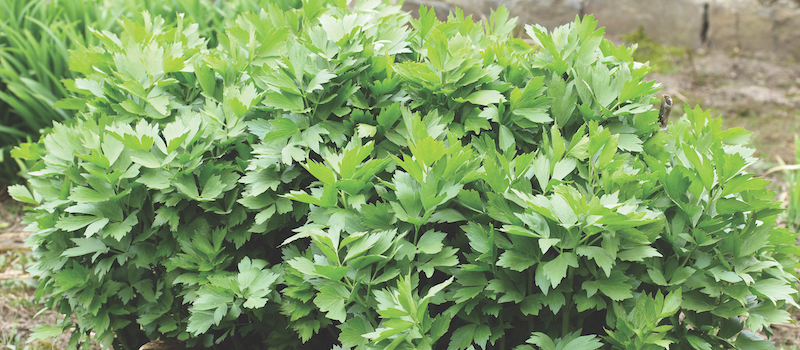
Image: Lovage herb seeds (Organic) from Suttons
A hardy herbaceous perennial which grows to a height of 150-200cm (5ft-6ft 8in), the leaves of lovage have a celery-like flavour. Sow the seeds indoors or in a greenhouse from February to September at a temperature 16ºC ( 61ºF). Alternatively, direct sow outdoors in August. Plant out in the garden 60cm (2ft) apart in a sunny position and keep the plants well watered in dry weather. If the seeds are not required you should remove the flowers as they develop.
Harvesting: Pick the leaves as required. Collect the seeds when ripe.
Preserving: The leaves don’t dry very well but they can be frozen. Dry the roots and seeds.
Culinary Uses: Crush the seeds and add to bread and pastries or sprinkle over salads, rice, or mashed potatoes. The chopped leaves taste nice in soups, stews and casseroles and fresh young leaves go nicely in salads. The peeled roots can be cooked or pickled.
How to grow marjoram
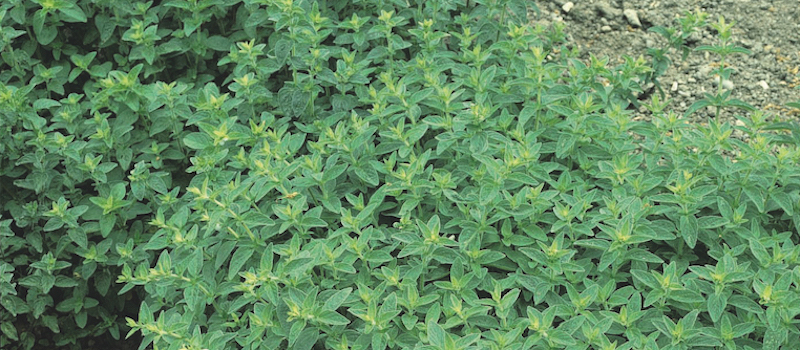
Image: Sweet Marjoram herb seeds from Suttons
Sow marjoram seeds in nutrient-rich, freely draining, alkaline soil from March through to May – the richer the soil, the stronger the flavour. If growing in containers, apply liquid fertiliser regularly.
Harvesting: Pick the young leaves at any time. If the leaves are required for preserving they should be picked just before the flowers open.
Preserving: Preserve the leaves by freezing or drying.
Culinary Uses: Add finely-chopped leaves to salads, meat dishes and sauces for fish. Marjoram should be added to meat dishes in the last few minutes of cooking. The stems can be laid on barbecue embers to give food a faint flavour of Marjoram.
How to grow mint
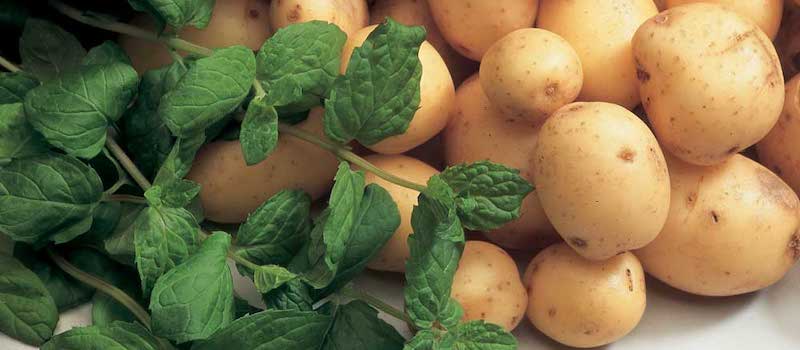
Image: Mint herb seeds from Suttons
Grow mint in full sun or partial shade, in a moist well-drained soil. Mint spreads very easily but you can contain the roots by planting in an old bucket with the bottom cut out. Grow a pot of mint on the window sill during winter for a supply of fresh leaves.
Harvesting: Use fresh, picking leaves and sprigs before they start to flower.
Preserving: Mint leaves can be dried or frozen.
Culinary Uses: Add fresh leaves to beans, beetroot, carrots, drinks, fruit salads, new potatoes, peas, spinach, and chop up for mint sauce.
How to grow oregano
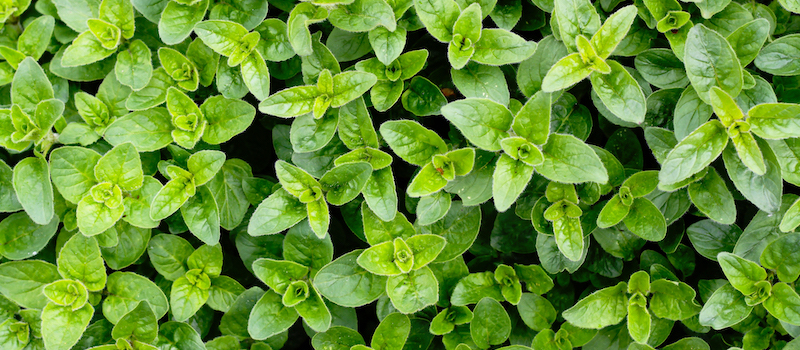
Image: Oregano herb seeds from Suttons
To develop a full flavour, you should grow oregano in well-drained, nutrient-rich soil. Choose a sunny position for these plants.
Harvesting: Pick the young leaves as required.
Preserving: Pick the leaves just before the flowers open and either freeze or dry them.
Culinary Uses: Use to flavour meat dishes, pizzas and omelettes.
How to grow parsley
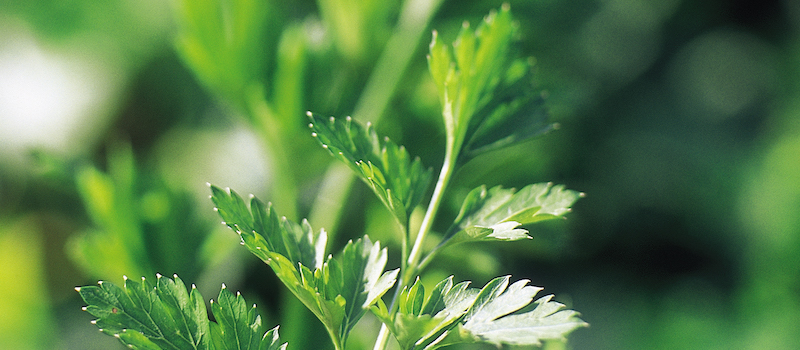
Image: Parsley Seeds ‘Plain Leaved 2’ from Suttons
Parsley grows well in full sun or light shade. Sow in a heated greenhouse during February and March and outdoors in April and May. Further sowings can be made in June to provide young growth over winter. During early autumn, pot up a few plants and grow on the window sill for use during the winter months.
Harvesting: Pick the leaves for immediate use.
Preserving: Dry or freeze the leaves.
Culinary Uses: Add freshly picked parsley to salads or finely chop and sprinkle over sandwiches, egg dishes, soups, fish dishes, boiled potatoes and sauces.
How to grow purslane
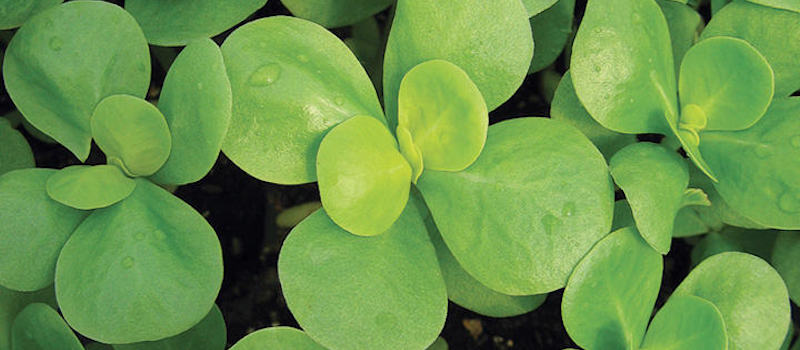
Image: Purslane Seeds from Suttons
Purslane grows best in well-drained soil in a warm, sunny, sheltered position. Sow the seeds outdoors from April to August at a soil temperature of 12-20ºC (54-68ºF). Make regular sowings throughout the summer for constant availability.
Harvesting: Can be grown as a cut and come again crop – take the young leaves and stems.
Preserving: The leaves can be pickled in vinegar.
Culinary Uses: Purslane tastes like a cross between mangetout and Bramley apples. Add the fresh, crunchy leaves to salads. Can also be added to stir fries, casseroles, omelettes or sautéed.
How to grow rocket
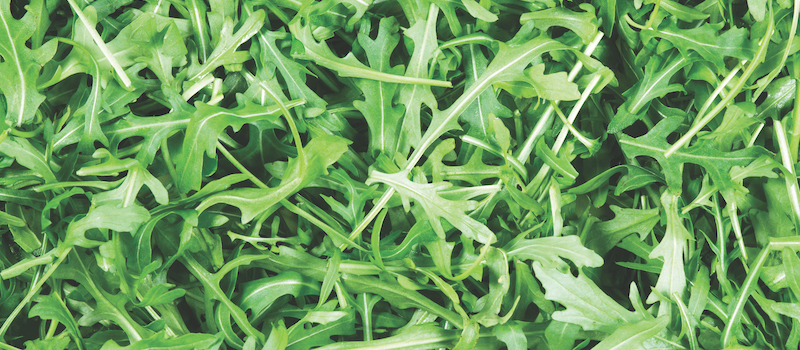
Image: Wild Rocket seeds from Suttons
Rocket requires a sunny position and a well-drained, moisture-retentive soil. Sow the seed from April to June thinning seedlings to 20cm (8ins) apart. The plants must be kept well-watered during dry spells to keep the leaves tender and to reduce the risk of the plants prematurely running to seed.
Harvesting: Pick the leaves as required.
Culinary Uses: Add to green salads. The leaves can also be used in sauces or steamed as a vegetable. The young leaves have a milder flavour.
How to grow rosemary
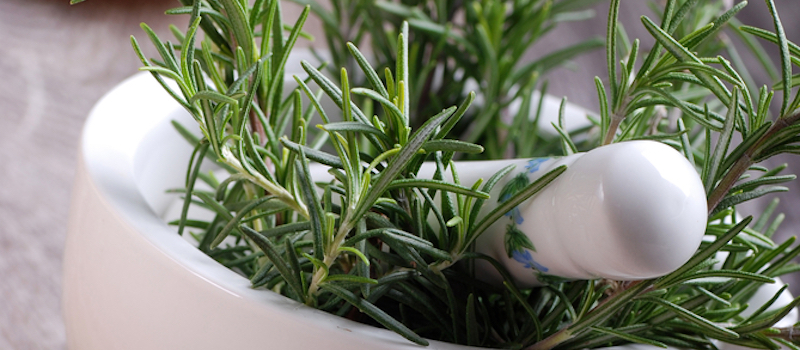
Image: Rosemary herb seeds from Suttons
Rosemary is a perennial herb that prefers to be grown in well-drained soil in a sunny and sheltered position. Sow indoors in early spring at a temperature of 21°C (70°F) or outdoors during April and May. Germination can be slow. Avoid over-watering as seedlings can be prone to damping off. Rosemary eventually grows to a height of 4-5ft but regular trimming stops it getting out of control.
Harvesting: Pick small amounts of leaves throughout the year. If preserving, pick before flowering.
Preserving: Dry branches and sprigs, stripping off the leaves before storing. For maximum aroma, crush the leaves just before use.
Culinary Uses: Use sparingly in meat dishes, especially lamb and pork. Add a fresh sprig to the tin when roasting potatoes.
How to grow sage

Image: Sage herb seeds from Suttons
Grow sage in a sunny position, sowing the seeds during February and March in a heated greenhouse or on a window sill. Alternatively, direct sow outdoors during April and May. To maintain a bushy habit, cut the plants back after flowering. Yellowing of the foliage may indicate that the plant needs repotting.
Harvesting: Sage leaves should be picked just before the flowers appear.
Preserving: To obtain the best flavour, dry the leaves slowly.
Culinary Uses: Used in stuffing for poultry and cooked with pork, duck and sausages.
How to grow sorrel
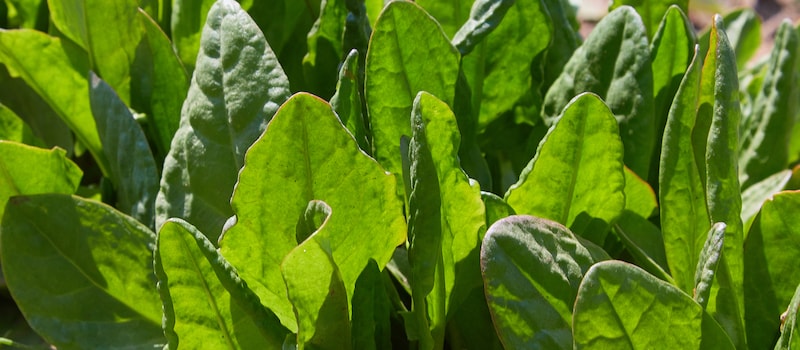
Image: Sorrel herb seeds from Suttons
Sorrel prefers to be grown in light shade, in a moist, rich, well-drained soil. Direct sow the seeds outdoors from March through to the end of May.
Harvesting: Gather young leaves as required.
Preserving: The dried leaves have little flavour. It’s best added to meals when fresh.
Culinary Uses: Use for flavouring omelettes, lamb, salads and sauces for fish, poultry and salads.
How to grow tarragon
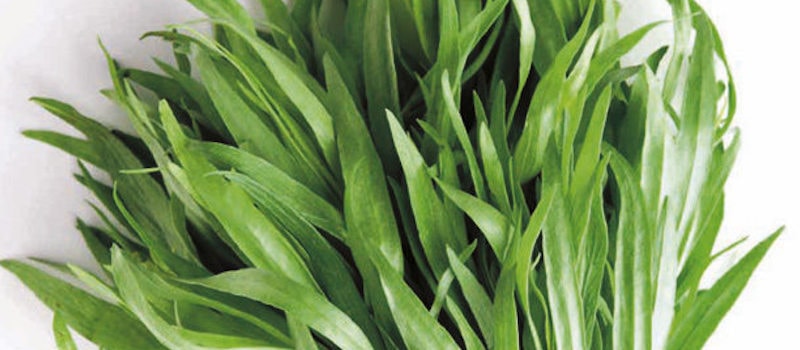
Image: Floramedia
Sow tarragon seeds in a propagator or indoors at a temperature of 15-20ºC (60-68ºF) from February to April. Alternatively, sow outdoors in April. These plants require a sunny position and well-drained soil.
Harvesting: Pick the leaves as required.
Preserving: The leaves may be frozen or dried quickly at a temperature of 27ºC (80ºF).
Culinary Uses: The leaves are wonderful when used to flavour pickles and mustards, or when added to sauces for chicken and fish, and as a flavour boost for rice dishes.
How to grow thyme
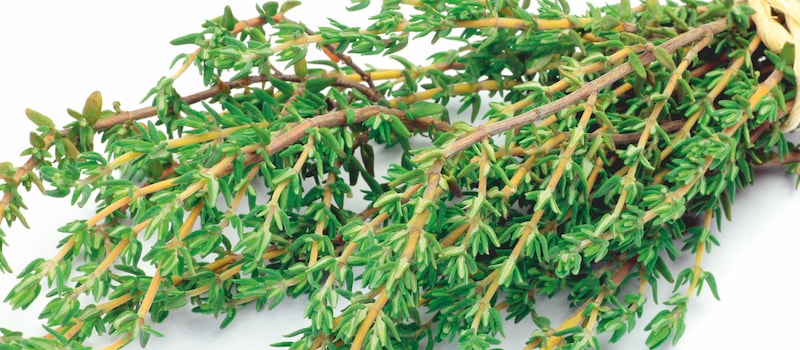
Image: Herb Seed ‘Common Thyme’ from Suttons
Grow thyme in full sun in well-drained soil, sowing from April to mid June.
Harvesting: Thyme leaves are at their best when the plants are in flower but can be picked throughout the summer.
Preserving: The leaves of thyme should be dried.
Culinary Uses: Add thyme to stock, marinades, stuffing, sauces and soups. Also excellent with beef, poultry, shellfish, game, veal, cheese and egg dishes.
Fresh herbs are just what you need to take your cooking to a whole new level. Healthy, nutritious, and bursting with flavour, it’s time to plan your herb garden now. Opt for an easy to grow herb seed collection, or view our full range of herb seeds here. And if you prefer to buy herb plants, we’ve got that covered too.
Last Updated on December 11, 2024 by Suttons Horticultural Team

